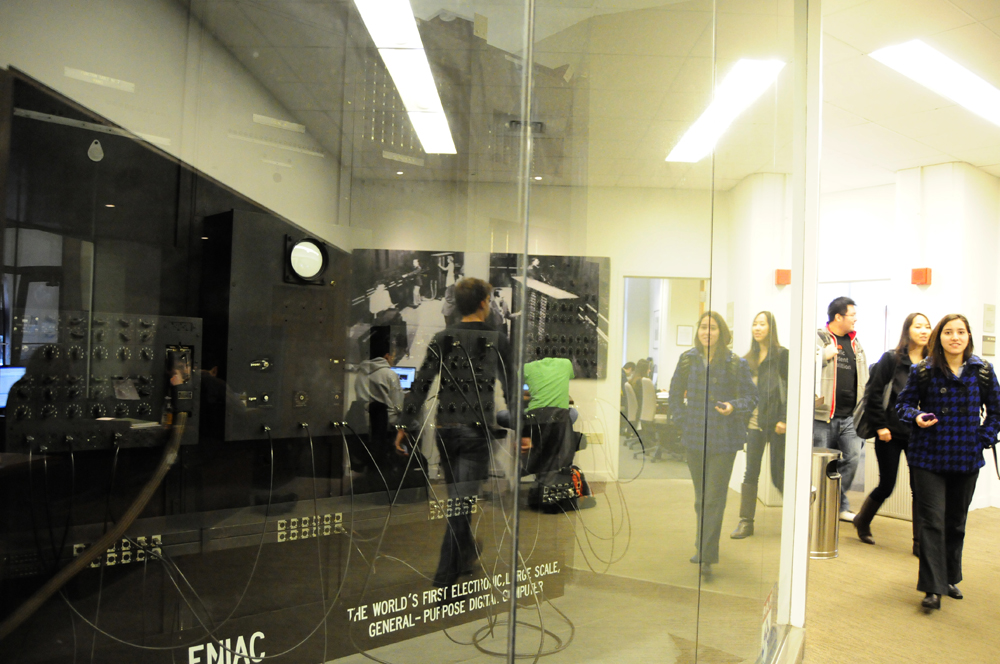There are many reasons why working in Philly tech is inherently cool, but one of our favorites is that the city is the birthplace of the world’s very first all-electronic, programmable computer — the ENIAC, which was first made public in Philadelphia on Friday, Feb. 15, 1946.
The ENIAC, aka the Electronic Numerical Integrator and Computer, was the first computer built to take full advantage of electronic processing speeds and to “think” for itself using conditional branching and nested subroutines. Called a “giant brain” in press coverage at the time, the actual machine belongs to the Smithsonian. But a good piece of it resides at the University of Pennsylvania’s Moore School Building, where the university’s department of engineering is housed.
And although its anniversary comes right after Valentine’s Day next week, Penn faculty and Jim Scherrer from the Compuseum have planned an array of virtual events starting Thursday, Feb. 11, to celebrate the computer’s last 75 years.
Paul Shaffer, an IT support specialist at Penn Engineering and ENIAC enthusiast, arrived at Penn 30 years ago, in time to help celebrate the 50th anniversary in 1996. He told Technical.ly that this year’s celebration will be different for obvious reasons — it’s virtual, not in-person — but also because the last 25 years have offered a lot for technological advances. And this time around, anyone can attend.
One of the most astonishing things about the ENIAC’s technology at the time of its reveal was its speed, Shaffer said. The machine could take a problem that would take the “women computers” (read more about them here) hours to solve and spit out the answer in about 30 seconds.
“There are very few things, or innovations that speed up by 1,000 times,” Shaffer said.
And in the 75 years since the ENIAC’s creation, the cost of computing has also gone down significantly. Now, most people can purchase a computer to carry around in their pocket, or even one that will sing “Happy Birthday” from a card.
The week of anniversary festivities kick off Thursday with a networking event hosted by the University City Science Center’s Venture Cafe. On Monday, Feb. 15, Penn Engineering faculty will host a mini-symposium, discussing the ways computation has revolutionized life and work, and the UNISYS Corporation will air a two-hour broadcast on the inception of the ENIAC. The week will wrap with another networking session hosted on Feb. 18 by Venture Cafe and a Q&A with the “people behind the computer.”
In organizing the programing around this event series, Shaffer said it was important to reflect on the ways the computer has shaped the past, present and future of life. He recently visited campus to produce a short video on the ENIAC that will air Monday, and found himself observing the large machine nearby in contrast to students studying in a computer lab.
It reminded him of the legacy of the ENIAC, and why it’s important to mark its 75th anniversary this year.
“It’s time people are reminded that we stand today on a virtual, figurative plane of existence that’s been brought into existence by computers,” he said. “This whole, amazing world that’s out there was shaped by it. You can just call out to your phone now for information. People don’t realize how it was the computer that made it all possible.”
That sentiment inspired a haiku Shaffer wrote that appears in the short feature, and runs through the theme of this coming week:
“ENIAC watches
Students learning computing
The legacy thrives.”
_
To learn more about the ENIAC and its 70th birthday, check out this 1991 documentary.







